Revista Electrónica de Investigación Educativa
Vol. 11, Num. 1, 2009
Interdisciplinarity and the Prior Knowledge
Profile Examination
Carmen Oñate Gómez
carmen.oniate.gomez@upm.es
Instituto de Ciencias de la Educación
Universidad Politécnica de Madrid
Profesor Aranguren s/n 28040
Madrid, España
Manuel Barrero Ripoll
manuel.barrero@upm.es
Departamento de Ingeniería y Cartografía
Universidad Politécnica de Madrid
Km.7,5 Carretera de Valencia 28031
Madrid, España
Francisco Sierra Gómez
francisco.sierra@upm.es
Departamento de Física y Química
aplicadas a la Técnica Aeronaútica
Universidad Politécnica de Madrid
Pl. Cardenal Cisneros s/n 28040
Madrid, España
(Received: September 3, 2007;
accepted for publishing: March 21, 2008)
Abstract
This article presents an activity that has been for years a common assignment for professors and students at the beginning of the school year at the Technical University of Madrid (UPM, for its acronym in Spanish Universidad Politécnica de Madrid): the Knowledge Profile Examination. Among the many variables this examination has, interdisciplinarity is one of the most significant ones. This remarkable meta-cognitive variable, which urgently needs to be studied, researched, solved and qualified, undoubtedly provides the best contributions to the quantity-quality intricacy of knowledge. The solution of the most important pedagogical issues in the coming years depends on it, when the development of a more humane, useful and responsible knowledge at universities is aimed.
Key words: Interdisciplinarity, prior learning, prior learning evaluation.
Introduction
This article describes, through specific data, a small sample that will help to understand what the Knowledge Profile Examination for newly admitted students consists of at the Technical University of Madrid, as well as the subsequent work carried out for the analysis of the questionnaires of the test. This examination is considered a method to improve teaching training.
The activity related to the Knowledge Profile Examination extends throughout the year starting with the draft of the test, and ending with the results published in the Overall Report. There are a series of variables present at different moments throughout the whole process, and which are of great importance for professors´ training. This article concentrates on one of them: interdisciplinarity.
I. Background
For 25 years, the Institute of Education Sciences (Instituto de Ciencias de la Educación) at UPM has administered a series of questionnaires to newly admitted students that together are known as the Knowledge Profile Examination. The purpose of this test is, among others, to inform professors and students as soon as possible the student’s current situation on the knowledge required to continue with the new course contents without any additional complications.
The rectoral team acknowledged the importance of generalizing and renewing this practice and as a result it launched the Initial Plan project. The aim of the plan is helping newly admitted students to review the basic contents needed to reduce the first year difficulties at the university. This plan was uploaded on the Internet and it can be accessed by every first year student.
The main objective of the Institute of Education Sciences (ICE, for its acronym in Spanish Instituto de Ciencias de la Educación) is to focus attention on professors. Consequently, the examination centers on the previous knowledge acquired by students since the information obtained becomes important when professors want to determine new learning objectives. For this reason, people who were involved in the examination settled the Knowledge Profile Research Group (GRINPEC, for its acronym in Spanish) with the purpose of understanding the implications that arise from the study and analysis of the student’s previous knowledge on professors’ training.
II. Method
This article observes one of the implicit concerns when referring to the Knowledge Profile Examination but that must be made explicit. It is a concept that has been mentioned frequently, but rarely properly treated at universities: interdisciplinarity (Piaget, Mackenzie, Lazarsfeld et al., 1973). It is an important variable in teaching and we have carried out parallel research on the subject (Oñate, 1989; Oñate and Martín, 1993; Oñate and Palencia, 1991; Oñate, Palencia and López, 1992; Oñate, Palencia and Pascual, 1987a, 1987b), as well as it has been included as a subject in a doctoral program (Oñate, 1999).
Interdisciplinarity has also been a constant concern for the people who work on the Profile Knowledge Examination. This examination seeks a combined presentation of the results of the subjects to contribute intentionally, although elementally, to an interdisciplinary context.
Every year, an overall report is presented which includes the questionnaires and results on four subjects: Mathematics, Physics, Chemistry, and Graphic Expression. Professors are encouraged to observe what other colleagues have suggested and the results obtained by the students, not only at other schools but also on other subjects, since the information concerns the same students and the implications of the four subjects affect the whole course.
With this, some common obstacles have been avoided by discovering the different functions that content may have in various contexts. The purpose is to facilitate a more objective and realistic overview of the mind mapping of the students, who attend classes where contents of a specific field of knowledge are discussed; however, this fact does not mean that whenever they attend to a class of specific contents, they will leave the rest of their knowledge at home (Edgar and Piattelli, 1983).
In that way, the professor becomes aware about the fact that students need to integrate everything they learn as a whole, and if that is achieved satisfactorily, students will use the knowledge they have learned before for better or worse, even if it corresponds to different subjects.
It is widely known that information is usually articulated in the brain, even when it has been acquired from different fields of knowledge. This turns out to be also extremely useful in everyday mental economics, due to the great number of available sources of information and to the fact that this number will continue growing exponentially.
However, classes sometimes are spent restating the same information, and causing errors on basic concepts, which may affect other fields of knowledge. These errors are difficult to correct without the proper and specific treatment, which does not occur in most cases.
As far as the studies conducted at this university are concerned, and which maintain the primary objective of solving technical problems, the multiplicity of different variables is obvious even in the most elemental proposal. Several fields of knowledge are involved in the solution of these problems, and a joint and coherent articulation of information is needed to access it and update it easily.
The fact that students can observe that kind of thinking used by the professor allows them to be part of the best learning process ever, since they are learning the most important aspect by just attending classes. Nowadays, contents can be found in other places, but the basic foundation of educations lies, as it has always been, in demonstrating how knowledge is articulated in order to find the most suitable solution to every existing problem.
Valuable as well as necessary attempts have been made in the field of metacognitive knowledge (Apostel et al., 1970). Nonetheless, there are still important contributions to be made to this research field that, in the near future, can solve important problems the faculty has been already facing for a long time at the university. It is necessary to keep working on the quality-quantity variables of knowledge. A more humane, useful and responsible articulation of knowledge will be only achieved at universities through valuable information synthesis and coordination.
Due to the aforementioned, the interest for the Knowledge Profile Examination arouse, as well as from the presentation of the results of different subjects, which lead to the aforesaid objective. Academic failure can occur in any other place but not in one where an evaluation is taking place (Fernández Biarge and Oñate, 1984).
Over the last few years, the administration of the exam has produced similar characteristics to those of the previous years. The presentation of the obtained data gives the opportunity to comment on this institutionalized activity.
The purpose is to spread the information on the activity to intensify and increase the interest for the Student’s Knowledge Profile that a professor needs to know when starting a new course. At the same time, a number of updated pedagogical variables are studied, including interdisciplinarity, which explicitly are important for a quality teaching training.
III. Results
To completely understand what has been done on the Knowledge Profile Examination, it is better to make reference to the different areas within the Exam. These give a better project comprehension than a simple description of the test. Below is the data that was gathered on the final reports during the last years.
No individual data will be mentioned in this article. However, the individual information is immediately sent to the professor and it is also given to every student at the beginning of the school year. Likewise, this article does not include the detailed classification of questions, which differentiates it from others found on the Internet in these days. Each questionnaire of the Knowledge Profile Examination consists of 30 questions. These questions are related to three content areas within each subject and to three activities or mental skills required at the time of answering the questionnaires.
The structure of the examination allows the results to be narrowed down, since there are many different difficulties regarding the subject contents and the competencies to be developed within the learning process. The questions that measure these difficulties are classified as: informative, operative, or reasoning questions. These are later discussed in the Discussion section.
The results selected for this article are global, although they mainly focus on Chemistry and Graphic Expression, which are the subjects that took time to be incorporated in the UPM Initial Plan. The latter, as mentioned before, was uploaded on the Internet as a resource for newly admitted students. The total number of correct answers is mentioned for both centers: Higher Technical Schools as well as University schools; together they constitute the UPM.
It is important to take into consideration that in the first year, both school programs have relatively the same difficulty, but groups diversify as the courses advance. The programs at university schools (in fact all of them are university schools) are completed in less time and their specific objective is professional practice. While, programs at Higher Technical Schools extend topics related to research, management or teaching throughout other classes.
Nonetheless, it is important to mention that currently the UPM is in the process of modifying and unifying this classification according to the new guidelines of the European Union. Therefore, with this unification, the three levels: bachelor’s, master’s and doctoral programs will constitute one academic pathway with different academic specialties.
In Table I, Figure 1, Table II, and Figure 2, the overall percentages of correct, incorrect and blank answers are shown. These percentages were gathered from the classes that are indicated in and at the centers were the examination was carried out.
Table I. Total Results of the Graphic Expression questionnaire, in percentages
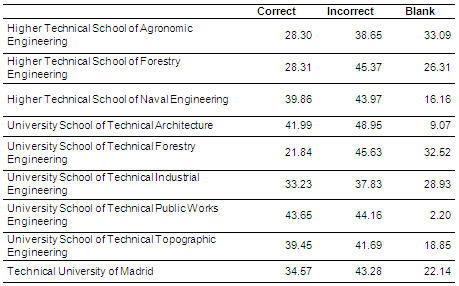
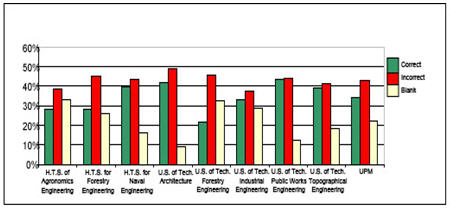
Figure 1. Total results of the Graphic Expression questionnaire
Table II. Total results of the Chemistry questionnaire in percentages
Correct Incorrect Blank

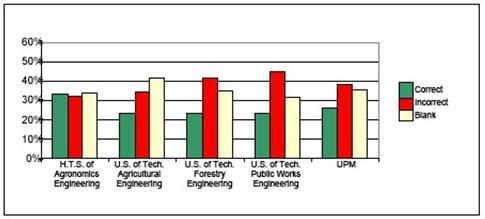
Figure 2. Overall Results of the Chemistry questionnaire
As it can be observed, none of the schools had 50% of correct answers. The percentages were very similar at the Higher Technical Schools and at the university schools.
The results for the variable Technical University of Madrid showed that the number of incorrect answers was higher than the number of correct answers. This pattern was observed in all the centers. Later on in this article, the progress throughout the years is discussed.
The overall results demonstrated that Chemistry showed the same trend observed in former result reports; in fact, it reached lower scores than the average. The only difference was that Agronomic Engineering showed a higher percentage in Chemistry this time. This may have resulted from the fact that knowledge of this subject is foreseeable in Agronomic Engineering.
Index and statistical score values were obtained from results in the evaluation (and integrated as part of the research activities after the administration of the exam). The information was presented according to the difficulty and efficiency indexes.
The question’s difficulty index is generated by a computer software (Diago, Oñate, Palencia and Lagunilla, 1990). There were five levels of difficulty depending on the answers. This method allowed identifying important aspects of the examination.
For example, the aforementioned index is an excellent tool to analyze the similarities or differences of one topic in different contexts. The possibility of finding repeated difficulties or differences, according to the courses, lead to basic questions that will help as indicators. These indicators may result significant when developing a correct articulation in the student’s mental structure.
The data here presented only refers to one subject that explicitly illustrates the differences of the results when comparing the two centers. Table III and Figure 3 show difficulty indexes collected from the administration of the test in the Higher Technical Schools. Table IV and Figure 4 display the data obtained from the university schools.
Table III. Summary of the difficulty index obtained from Higher Technical Schools


Figure 3. Summary of the difficulty indexes obtained from
the Higher Technical Schools in percentages
Table IV. Summary of the difficulty indexes
obtained from the university schools


Figure 4. Summary in percentages of the difficulty
indexes obtained from the university schools
This section confirmed what previously collected data had shown before. It is important to mention that even when data hadn’t been in complete detail, and this article wouldn’t have been enough, the computer provides exactly the questions that constitute the five levels of difficulty; it broadens the information for multiple complementary tasks.
Table V and Figure 5 show the comparison between the two types of centers.
Table V. Summary of the indexes according to the center type

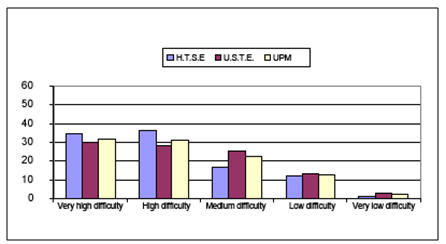
Figure 5. Summary in percentages of the indexes according to center types
The differences between the two groups were not very significant, thus the possibility to keep using the same questionnaires for both centers existed.
To conclude with this section, efficiency indexes are included. Efficiency indexes show if a question in the exam achieves its objective. In other words, if questions measure what they are supposed to, according to the quality of their formulation. This index was obtained by associating the results of each question and the rest of the answers.
Only comparative tables were included. Each course was studied at two centers: a Higher Technical School and a university school. Both shared the common characteristic of having correlated qualifications.
In table VI and Figure 6, the number of high efficiency questions exceeded the 50% and the computer software indicated the areas the questions belong to.
Table VI. Comparison between the H.T.S of Forestry Engineering and the U.S. of Forestry Technical Engineering in Graphic Expression

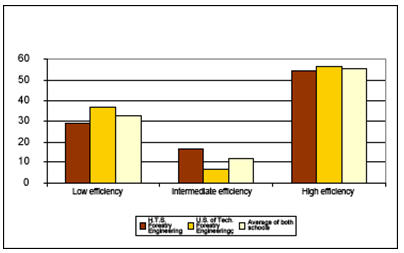
Figure 6. Comparison in percentages between H.T.S of Forestry Engineering
and U.S. of Technical Forestry Engineering in Graphic Expression
Table VII. Comparison between H.T.S of Agronomic Engineering
and U.S. of Technical Agronomic Engineering in Chemistry.

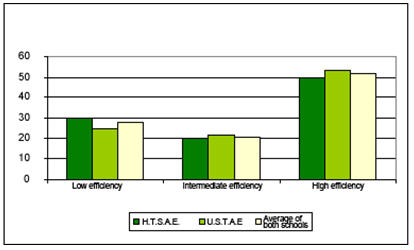
Figure 7. Comparison between H.T.S of Agronomic Engineering
and U.S. of Technical Agronomic Engineering in the area of Chemistry
Also in this subject, the high efficiency questions exceeded the 50%.
IV. Discussion
Although discussion limits to the data presented, this article will try to broaden what has been said and give further details, since some comments on the information have been brought up already.
The results show almost the same number of correct answers as it was in the previous years. Through the years, the number of correct answers is decreasing; a fact that has already been mentioned at the university centers.
For more than 25 years, the percentage of correct answers has been approximately 50% in all courses. This percentage has been decreasing gradually ever since.
The total scores distributed in the three content areas in each course and in the three cognitive activities or competencies lead to the following statements which clearly impact on the interdisciplinary field.
In Graphic Expression, the number of questions which are answered is smaller in the section of Descriptive Geometry, and the same happens for operative questions. In Chemistry, there is a similar situation in the descriptive section, which is relevant for discussion among the faculty members.
Regarding competencies, activity or operative competency shows the lowest scores, in both Chemistry and Graphic Expression. Likewise, these scores are variables that need to be thoroughly studied, because of the convergence of two complete different courses so as to share a significant coincidence.
Finally, it is important to mention that every professor receives a detailed report of every question, according to the group results. This allows the professor to analyze the content that has been assessed. In any of these fields of knowledge, unknown or poorly learned, may be the piece of knowledge that causes difficulties within the new courses, as it has been mentioned before.
V. Conclusions
There are two important conclusions that need to be highlighted: first, the results obtained from the Knowledge Profile Examination, which might be enough considering the facts that have been mentioned.
Second, when referring to interdisciplinarity and its importance for teachers, it is difficult to assess the progress on this matter, because it is hard to measure the interdisciplinary concern shown by professors as well as the behaviors determining it; consequently it still represents a challenge. It is well known that qualitative aspects such as these are observed through a different methodology than the experimental one, which is common in this type of research. However, it can be affirmed that the concept of interdisciplinarity has been considered at least, though the term is relatively new for many professors.
This research outlines that in the following years there is a possibility that the Knowledge Profile Examination is administered individually by each professor according to his or her courses given. This decreases the probability of presenting the results combined, as it has been done up to now, since the number of courses is increasing and they are very different from one another. Thus, it will be necessary to seek for a solution to maintain the undeniable importance of interdisciplinarity. The solution will probably be provided by the technology applied to education and the Internet.
Interdisciplinarity must be an explicit objective in order to get as many significant contributions as possible. Only in this way, will this important variable be studied, and which not only needs of qualitative research but also of becoming an important context for every serious pedagogical proposal.
The most generic objective is to get professors to incorporate interdisciplinarity to his/her cognitive structure. This will give students the maximum freedom and a minimum set of conditioning factors when finding the most suitable solution to a problem by using the resources acquired throughout the school years.
Only the students’ knowledge level is supposed to prevent them from finding solutions, and that always can be improved. If teaching and learning processes were understood under these premises, they would become one of the most interesting motivations for the continuity of new learning processes.
References
Apostel, l., Berger, G., Briggs, A., & Michaud, G. (1970). Interdisciplinarity problems of teaching and research in universities. Paris: Centre for Educational Research and Innovation.
Diago, A., Oñate, C., Palencia, V., &Lagunilla, M. (1990). Estudio mediante computador del perfil de conocimientos previos en áreas fundamentales de alumnos de nuestra Universidad. Unpublished manuscript, Technical University of Madrid, School of Informatics.
Edgar, M. & Piattelli, P. (1983). La unidad del hombre como fundamento y aproximación interdisciplinaria. In L. Apostel et al., Interdisciplinariedad y ciencias humanas (pp.188- 212). Madrid: Tecnos.
Fernández Biarge, J. (Dir.) & Oñate, G. (Coord.). (1984). Detección, análisis y acciones remediales de las dificultades críticas en materias fundamentales del primer curso de carrera de las Escuelas Técnicas Superiores de Madrid. Madrid: Technical University of Madrid.
Oñate, C. (1989). An interdisciplinarity significative pattern after motivation for learning. Research presented at the 3rd European Conference for Learning and Instruction Research, Madrid, Spain.
Oñate, C. (1999). La investigación científica: un enfoque interdisciplinar. Unpublished Manuscript, Technical University of Madrid, Doctorate Program. Accesed on September 2nd, at http://www.ice.upm.es/wps/cog/doctorado.htm
Oñate, C. and Martín, V. (1993). Interrelaciones entre las unidades biológicas del sistema viviente. Consecuencias básicas aplicables. Research presented a the IV Conference of Social Psychology, Sevilla, Spain.
Oñate, C. and Palencia, V. (1991). La interdisciplinariedad: estrategia imprescindible para la formación del ingeniero. Research presented at the Emerging Innovations as Means to Enhance the Teaching Quality in Engineering Workshops, Educational Science Institute, Technical University of Madrid, Spain.
Oñate, C., Palencia, V., & López, A. (1992). L’interrelation par mis les analyses epistemologiques de la psychologie et d’autres domaines scientifiques. Research presented at the XXV International Conference of Psychology, Brussels, Belgium.
Oñate, C., Palencia, A., & Pascual, M. A. (1987a). Curricula and interdisciplinarity in the computer science of the Polytechnic University of Madrid. Research presented at the SEFI Annual Conference, Helsinki, Finland.
Oñate, C., Palencia, A. and Pascual, M. A. (1987b). Interdisciplinarity: A fundamental frame for the future in the Polytechnic University of Madrid. Research presented at the SEFI Annual Conference, Helsinki, Finland.
Piaget, J., Mackenzie, W., Lazarsfeld, P. et al. (1973). Tendencias de la investigación en las Ciencias Sociales. Madrid: Alianza Universidad.
Translators: Eleonora Lozano Bachioqui and María Isabel Ramos
Please cite the source as:
Oñate, C., Barrero, M., & Sierra, F. (2009). Interdisciplinarity and the Prior Knowledge Profile Examination. Revista Electrónica de Investigación Educativa, 11 (1). Retrieved month day, year, from: http://redie.uabc.mx/vol11no1/contents-onate.html













